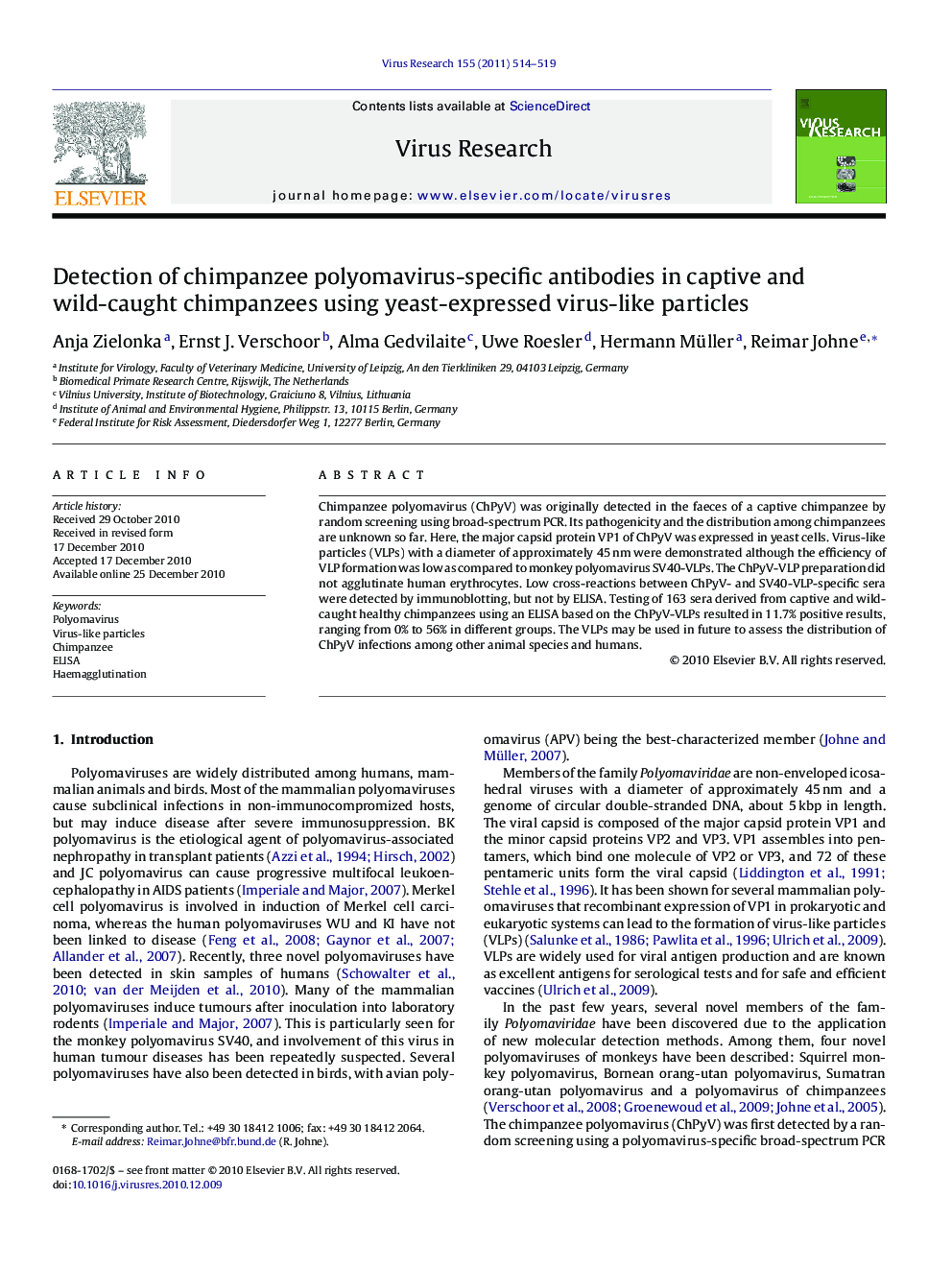| Article ID | Journal | Published Year | Pages | File Type |
|---|---|---|---|---|
| 3429449 | Virus Research | 2011 | 6 Pages |
Chimpanzee polyomavirus (ChPyV) was originally detected in the faeces of a captive chimpanzee by random screening using broad-spectrum PCR. Its pathogenicity and the distribution among chimpanzees are unknown so far. Here, the major capsid protein VP1 of ChPyV was expressed in yeast cells. Virus-like particles (VLPs) with a diameter of approximately 45 nm were demonstrated although the efficiency of VLP formation was low as compared to monkey polyomavirus SV40-VLPs. The ChPyV-VLP preparation did not agglutinate human erythrocytes. Low cross-reactions between ChPyV- and SV40-VLP-specific sera were detected by immunoblotting, but not by ELISA. Testing of 163 sera derived from captive and wild-caught healthy chimpanzees using an ELISA based on the ChPyV-VLPs resulted in 11.7% positive results, ranging from 0% to 56% in different groups. The VLPs may be used in future to assess the distribution of ChPyV infections among other animal species and humans.
